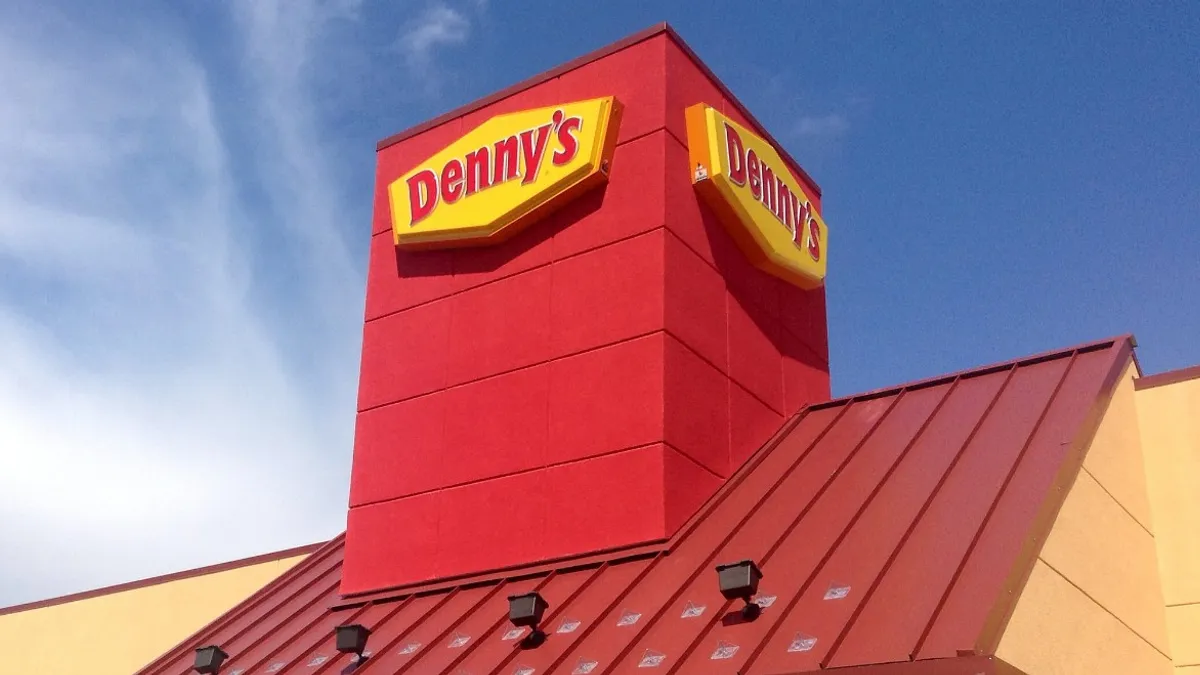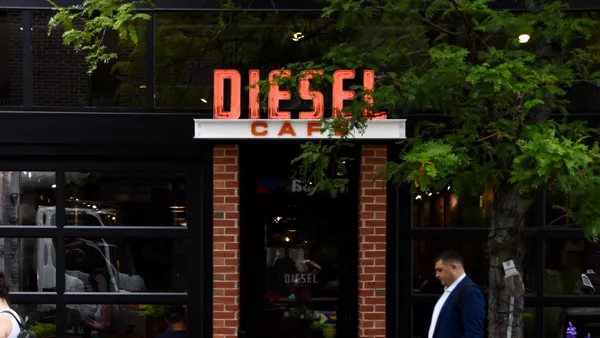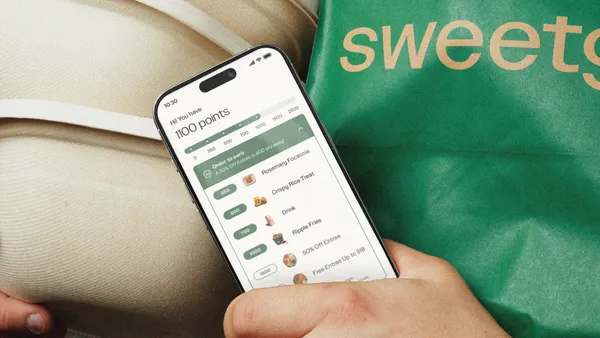Dive Brief:
- Denny’s has experienced a spike in delivery sales during the breakfast and late-night dayparts, driven in large part by younger consumers, according to Skift Table. Mike Wolfinger, Denny’s chief administrative and financial officer, said nearly one-fourth of the chain’s transactions are made through delivery or takeout.
- Delivery accounts for 8% more Denny's orders late at night than in-store. Lunch is now the only daypart with more dine-in orders than takeout/delivery orders.
- Despite its off-premise success, Wolfinger said younger consumers — particularly those with families — still like to dine in and the company’s remodeling program and menu changes have led to eight consecutive years of systemwide sales growth. The company’s remodels includes features that specifically appeal to a younger demographic, such as wood floors and contemporary colors.
Dive Insight:
Wolfinger said the chain’s on-demand platforms of delivery and takeout are modernizing the brand as younger consumers demand the convenience of off-premise options. Consumers are clearly responding — in just the past two years, off-premise net sales have jumped by 4% to 11% of the company’s total sales.
Denny’s isn’t necessarily using some secret formula to drive this growth; chains across the casual segment are benefiting from off-premise business after nearly a decade of struggling. According to a recent report from investment bank UBS, millennials are three times as likely to order delivery than their parents, and food delivery apps are on average among the top 40 most downloaded mobile apps in major markets.
Last year, Denny’s CMO John Dillon unveiled the company’s plan to be more relevant with younger consumers through unexpected partnerships with brands like Amazon, Pandora and Hulu, and through its on-demand 24-hour delivery business. Denny’s has also a pretty eccentric and snarky social media presence, which has appealed to younger consumers.
Like Denny’s, its competitor IHOP is also pursuing more off-premise business. The chain is further appealing to younger consumers by expanding into nontraditional locations such as colleges and universities and testing order-and-pay technology in store. IHOP has also launched a location with a full bar.
Last summer, Applebee’s/IHOP CEO Stephen Joyce slammed reports that millennials were the reason behind casual dining’s retrenchment, telling Business Insider that the issue instead is a lack of differentiation across the industry. This might be music to IHOP and Denny’s ears as the two chains ramp up delivery — Joyce told Restaurant Business that breakfast delivery competition is negligible.
A recent report from Restaurant Business, however, indicates that other competitors FirstWatch, Cracker Barrel, Perkins, Shoney’s and Bob Evans — have higher scores among the millennial generation than Denny’s or IHOP. All of it is good news for the overall category. It doesn’t matter whether or not Denny’s and its competitors are finding relevance with millennials through nostalgia or delivery or snarky marketing — it matters that they’re finding traction in general. This is a lucrative diner base; nearly half of millennials spend more on dining out than they’re saving.














